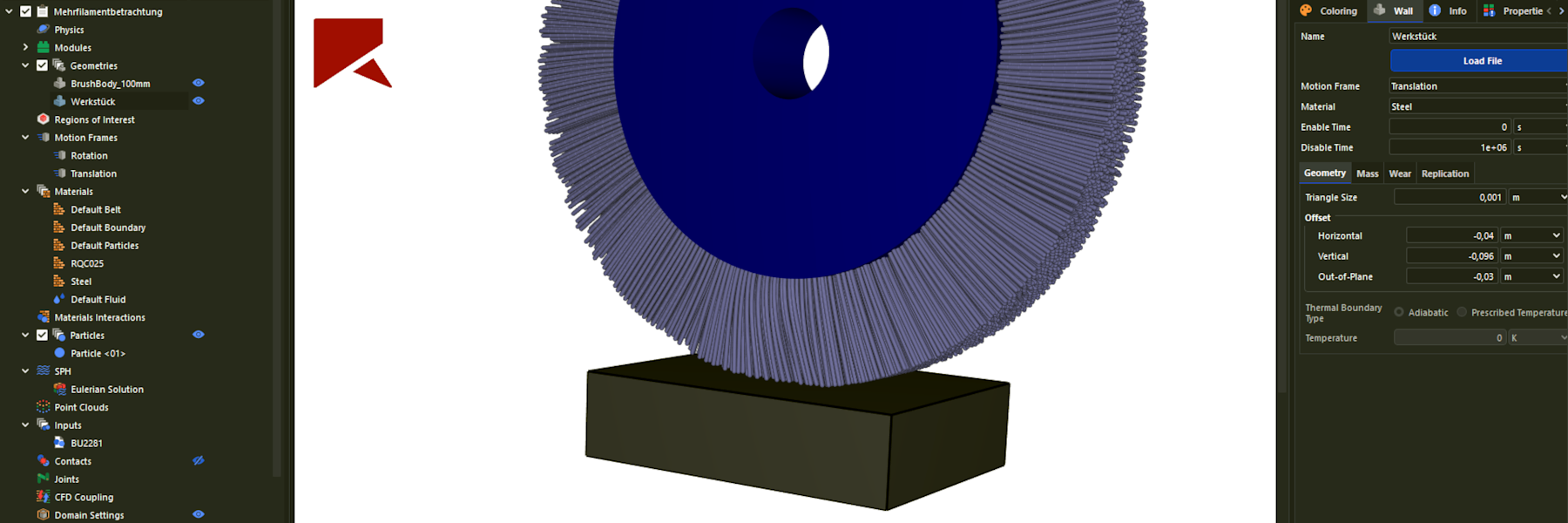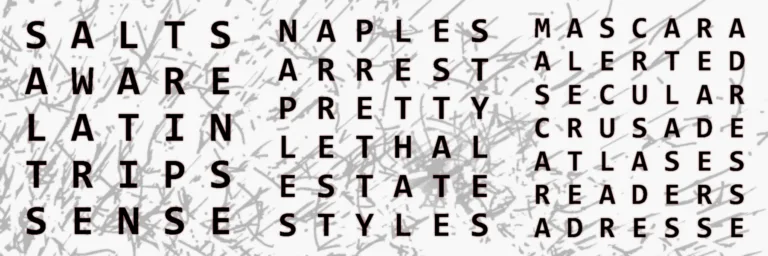Once I finish my dissertation on the modeling of filament interactions of abrasive brushing tools, I will write a lengthy rundown for this post including lots of pretty pictures. However, it still needs revisions before it can be defended and published. If you are even more impatient than I am, please refer to my published articles on the topic:
- Hoyer, A.; Uhlmann, E. DEM Simulation of Abrasive Brushing Processes on Additively Manufactured Workpieces. Procedia CIRP 2025, 133, 203-208.
https://doi.org/10.1016/j.procir.2025.02.036 - Hoyer, A.; Uhlmann, E. Image-Based Tool Characterization and DEM Simulation of Abrasive Brushing Processes. Machines 2024, 12(3), 171.
https://doi.org/10.3390/machines12030171
I use Ansys Rocky (formerly: Rocky DEM) for my discrete element simulations. This way, I could focus on making accurate models of the brushing tools and processes without having to solve differential equations on paper first and lose my head over the implementation. Below are some first impressions in the form of a video.
⚠️ This post is still under construction, so be sure to visit again later.




Leave a Reply